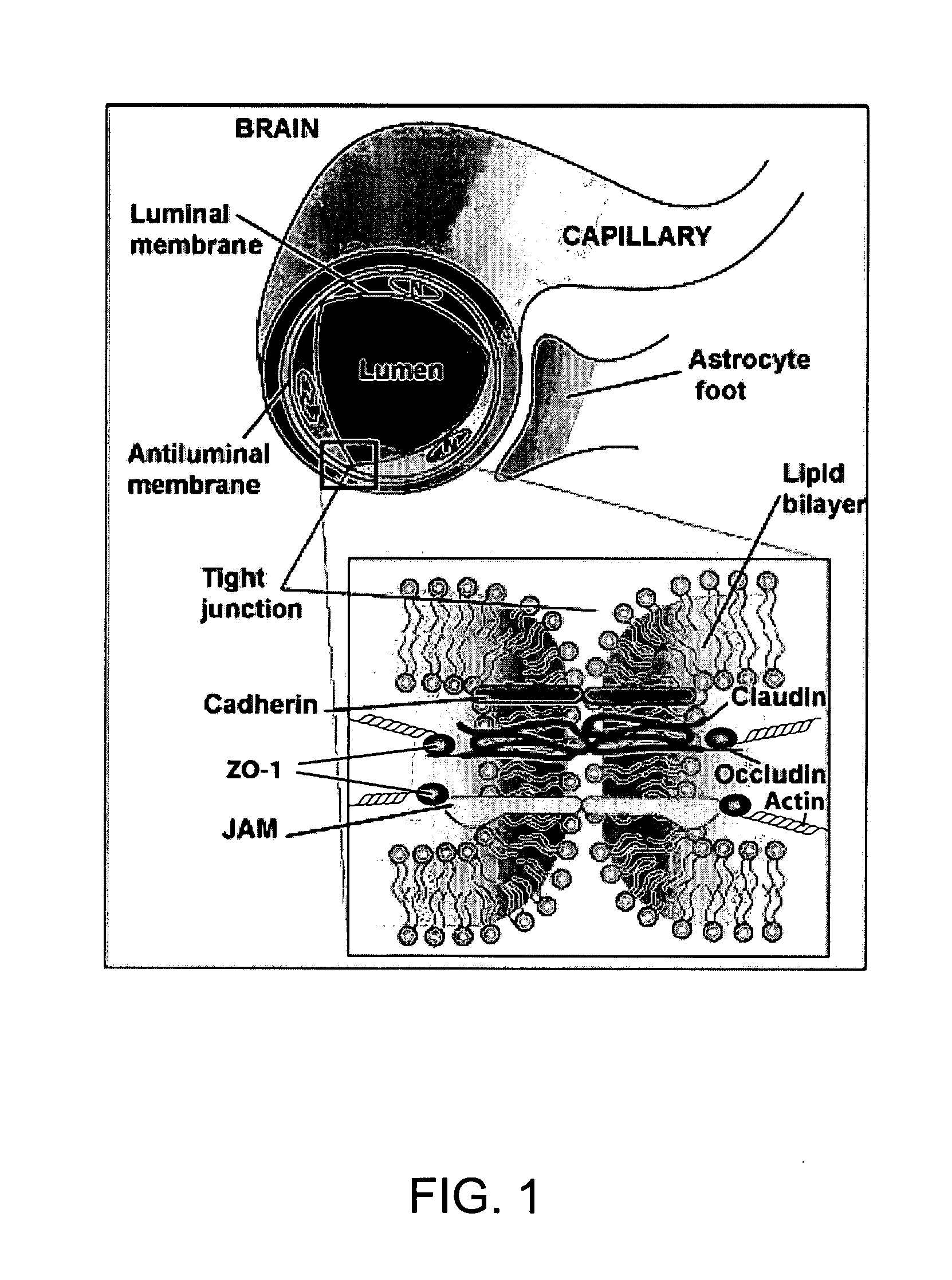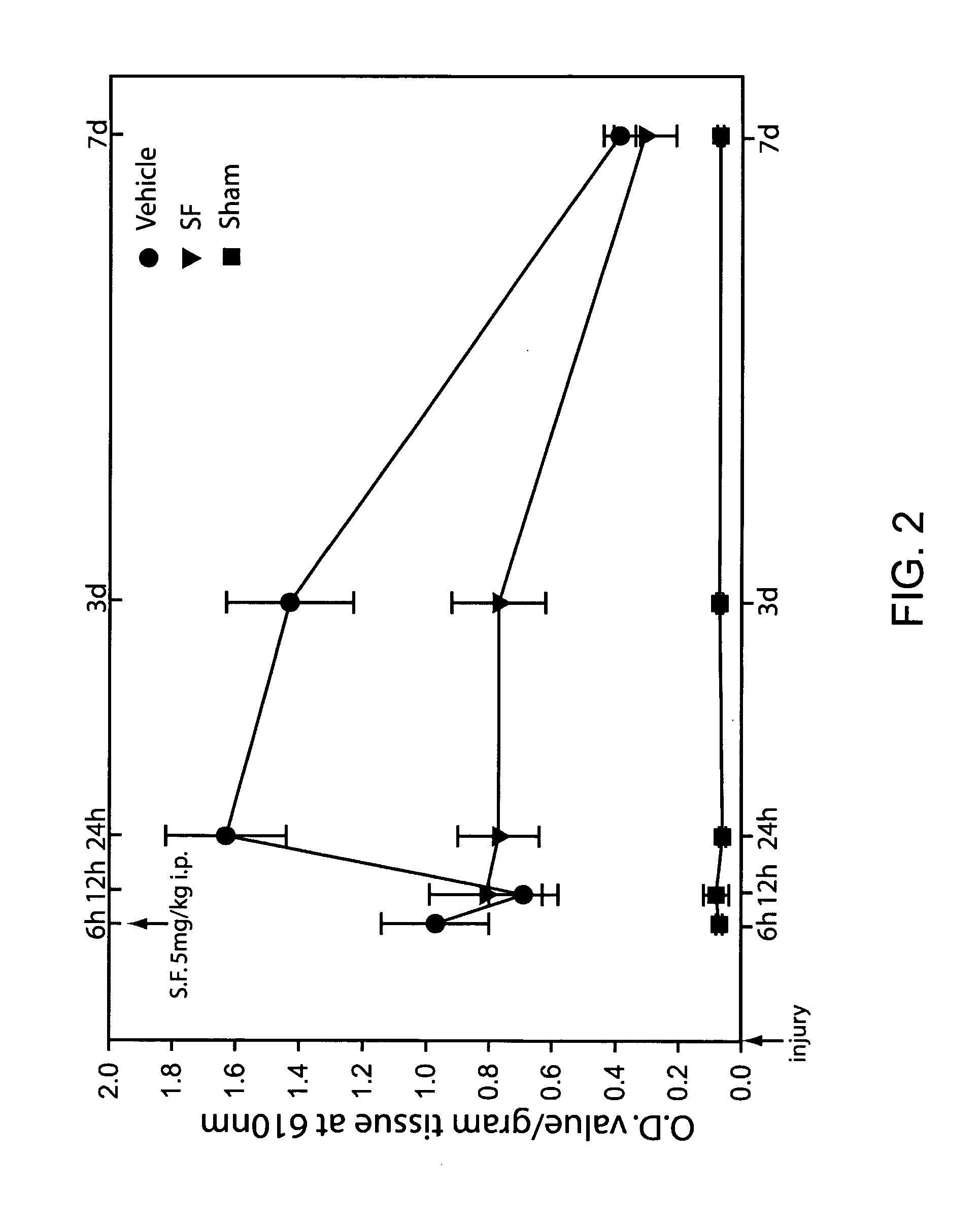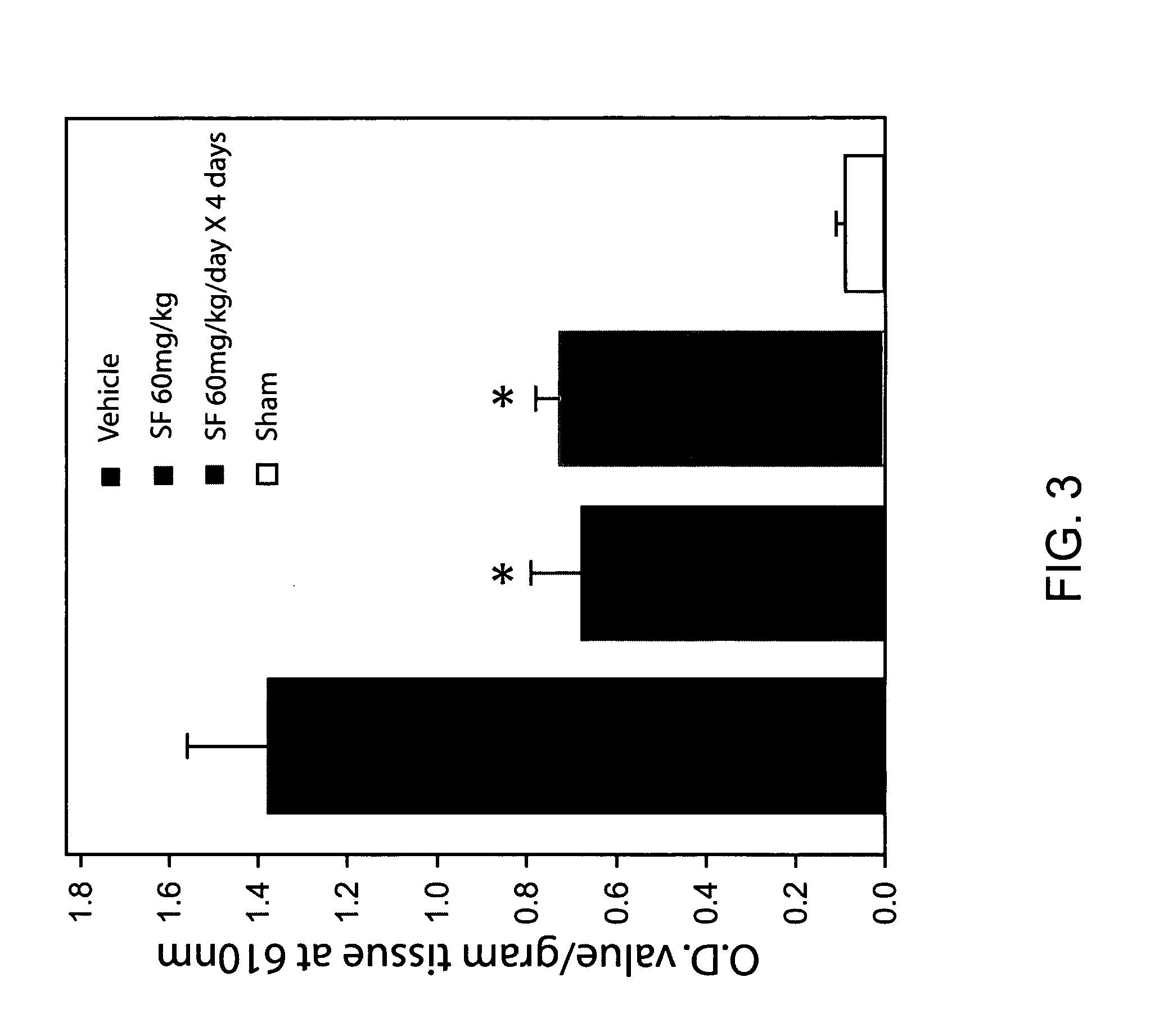Methods and compositions for treatment of central nervous system injury with isothiocyanates
a technology of central nervous system injury and composition, which is applied in the field of methods and compositions for treating central nervous system injury with isothiocyanates, can solve the problems of persistent cognitive and motor deficits, serious side effects, and ineffective reduction of pathology and behavioral deficits of methylpredinisolone, so as to reduce the effect of central nervous system cell death, reduce cognitive decline and/or damage, and reduce the effect of insul
- Summary
- Abstract
- Description
- Claims
- Application Information
AI Technical Summary
Benefits of technology
Problems solved by technology
Method used
Image
Examples
example 1
Attenuation of Blood-Brain Barrier Break-down from Brain Injury following Intraperitoneal Administration of Sulforaphane
[0070] Six hours following injury or sham surgery, animals were administered with either 5 mg / kg of sulforaphane or equal volume of vehicle intraperitoneally (ip)43. Blood brain barrier integrity was examined at 6 hr, 12 hr, 24 hr, 3 days and 1 week following injury by Evan's blue dye extravasation into the brain tissue. FIG. 2 shows the amount of dye in brain tissues (indicated by OD at 610 nm) for sham, injured animals receiving vehicle and injured animals receiving sulforaphane. The figure shows that an initial increase in the amount of dye in the brain tissue occurs by 6 hr following injury as compared to the sham group. This increase in dye extravasation is likely related to the primary insult. An additional, secondary increase in dye extravasation is detected at the 24 hr and 72 hr time points. Sulforaphane can significantly attenuate dye extravasation at th...
example 2
Attenuation of Blood-Brain Barrier Permeability by Oral Administration of Sulforaphane
[0071]FIG. 3 is a bar graph showing that oral administration of sulforaphane (SF) (60 mg / kg / day for one or four days) is effective in decreasing the extravasation of Evan's Blue dye. Day one administration was given 6 hr following brain injury. *P<0.05 (SF vs. Vehicle)
example 3
Post-Injury Administration of Sulforaphane, Allyl Isothiocyanates and Phenylethyl Isothiocyanates Decrease Blood-brain Barrier Permeability.
[0072] 5 mg / kg sulforaphane, 2.8 mg / kg of allyl isothiocyanate or 4.6 mg / kg of allyl isothiocyanate (molar equivalents to 5 mg / ml sulforaphane) were administered i.p. 6 hr after brain trauma. Blood-brain barrier integrity following isothiocyanate administration was measured by Evans Blue extravasation into the brain 24 h after TBI brain trauma and compared to injured animals receiving vehicle. The results of those tests show that post-injury administration of each of the representative isothiocyanates sulforaphane, allyl isothiocyanate and phenylethyl isothiocyanate decreased blood-brain barrier permeability in the test model (FIG. 4).
PUM
| Property | Measurement | Unit |
|---|---|---|
| Pressure | aaaaa | aaaaa |
| Toxicity | aaaaa | aaaaa |
Abstract
Description
Claims
Application Information
 Login to View More
Login to View More - R&D
- Intellectual Property
- Life Sciences
- Materials
- Tech Scout
- Unparalleled Data Quality
- Higher Quality Content
- 60% Fewer Hallucinations
Browse by: Latest US Patents, China's latest patents, Technical Efficacy Thesaurus, Application Domain, Technology Topic, Popular Technical Reports.
© 2025 PatSnap. All rights reserved.Legal|Privacy policy|Modern Slavery Act Transparency Statement|Sitemap|About US| Contact US: help@patsnap.com



